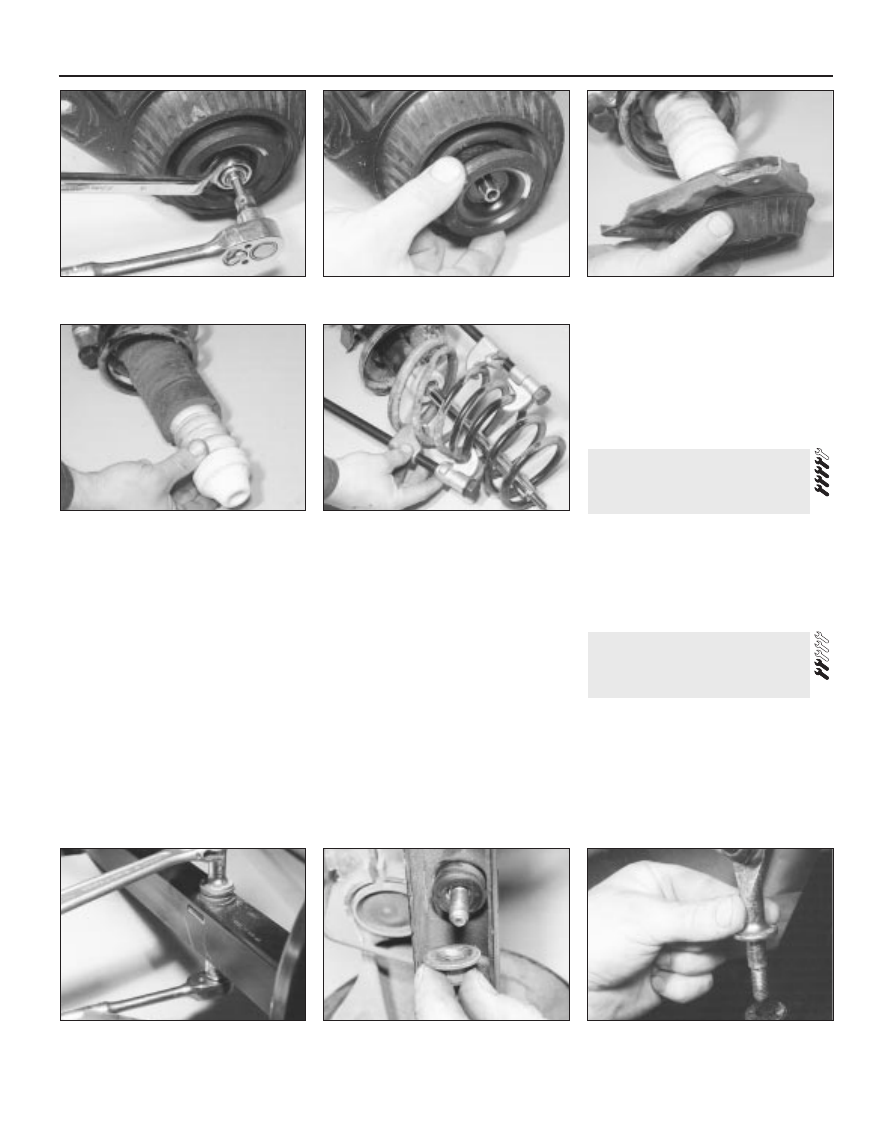Ford Mondeo (petrol engines). Manual - part 108

Refitting
15 Locate the strut assembly (together with
the coil spring compressor tool) under the
wheel arch, and locate the bracket on the
bump stop on the rear suspension
crossmember. Insert the two bolts securing
the upper mounting to the underbody tower,
and tighten them to the specified torque.
16 Carefully release the coil spring
compressor tool, making sure that the spring
locates correctly in the upper and lower seats,
and that the strut bracket locates on the
crossmember bump stop. The bump stop is
tapered inwards, and the strut bracket should
be fully engaged with it before releasing the
coil spring.
17 Raise the knuckle and engage it with the
strut, then insert the clamp bolt and tighten to
the specified torque.
18 Reconnect the front and rear lower arms
to the knuckle, and finger-tighten the bolts at
this stage.
19 Reconnect the tie-bar to the bottom of the
knuckle, and finger-tighten the bolt at this
stage.
20 Refit the anti-roll bar link to the lower arm,
and tighten the nut to the specified torque.
21 On disc brake models, refit the caliper
bracket to the knuckle, and tighten the
mounting bolts to the specified torque (see
Chapter 9). Make sure that the flexible brake
hose is not twisted.
22 On drum brake models, connect the
flexible hose to the strut, insert the clip, then
insert the rigid brake line and tighten the union
nut. Remove the brake hose clamp, then
bleed the hydraulic brake circuit as described
in Chapter 9.
23 Where applicable, reconnect the wiring
multi-plug for the adaptive damping, and clip
the wiring to the strut.
24 Where applicable, refit the ABS sensor as
described in Chapter 9, and clip the wiring to
the strut.
25 Refit the wheel, and lower the vehicle to
the ground.
26 With the weight of the vehicle on the rear
suspension, fully tighten the lower arm and
tie-bar mounting bolts.
1 The procedure is similar to that for the front
suspension strut, and reference should be made
to Section 5. Note that the spring compressor
tools will already be in position on the coil spring
following the removal operation. Refer also to
the accompanying illustrations for details of the
separate components (see illustrations).
Removal
1 Chock the front wheels, then jack up the
rear of the vehicle and support it on axle
stands. Remove both rear wheels.
2 Unscrew the nuts securing the anti-roll bar
links to the front lower arms on both sides.
Hold the upper part of the links with a spanner
while loosening the nuts. Recover the rubber
bushes (see illustrations).
13 Rear anti-roll bar and links
(Saloon/Hatchback models) -
removal and refitting
12 Rear suspension strut
(Saloon/Hatchback models) -
overhaul
10•12 Suspension and steering systems
12.1A Rear strut dismantling - unscrew
the upper mounting nut . . .
12.1B . . . remove the cup . . .
12.1C . . . upper mounting bracket and
seat . . .
13.2A Loosen the nut . . .
13.2B . . . remove the nut and rubber
bush . . .
12.1D . . . gaiter and bump stop . . .
12.1E . . . and coil spring
13.2C . . . and remove the anti-roll bar link
from the lower arm